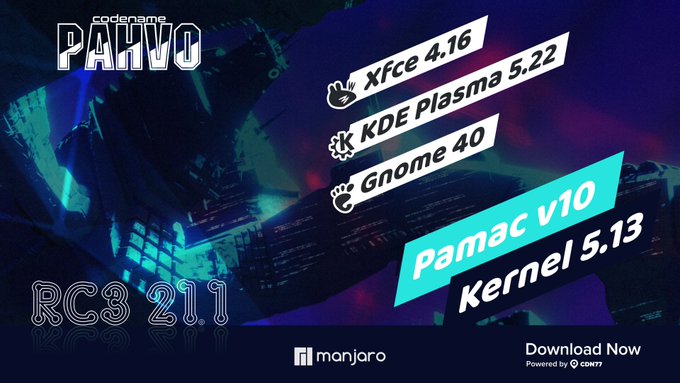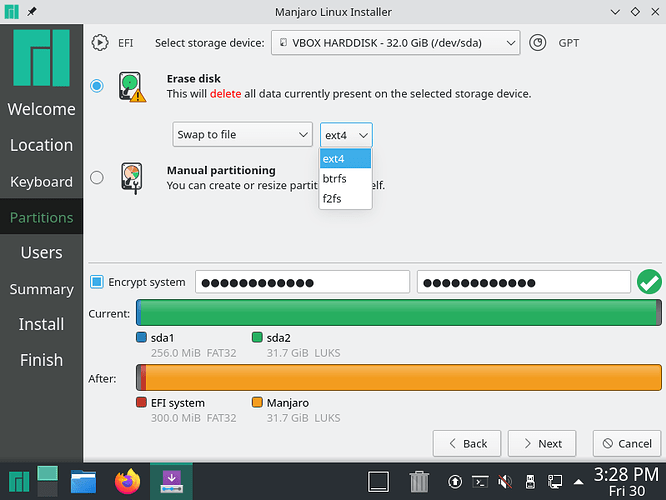
We added automatic backups on any package upgrade action when you use BTRFS as your filesystem. Get our latest Release Candidate now!
Since we released Ornara earlier this year all our developer teams worked hard to get the next release of Manjaro out there. We call it Pahvo.
This release features major improvements to Calamares, including filesystem selection for automatic partitioning and enhanced support for btrfs. For btrfs installations, the default subvolume layout has been improved for easier rollbacks and less wasted space on snapshots. Additionally, swapfiles on btrfs filesystem are now supported.
The Gnome edition has received a major rework the update to Gnome 40. The default layout has been redesigned to follow more closely upstream defaults, with some adjustments to reduce the pointer travel for users who prefer using mouse with gnome.
For users that preferred the old vertical desktop layout, we have the Manjaro legacy layout, which mimics the previous gnome defaults. We made sure that all the layouts shipped with gnome-layout-switcher still work after the transition to Gnome 40.
Firefox now comes with the gnome-desktop style theme enabled by default for more consistent look with the desktop, but this can be toggled with one click from gnome-layout-switcher for users preferring the native Firefox look.
The Plasma edition comes with the latest Plasma 5.22 series, Frameworks 5.84 and Applications (Gear) 21.04. We also updated our default theme to match more upstream Breeze theming. This includes also a new wallpaper.
Plasma has become more pleasurable to use through improvements to the design and greater smoothness and consistency in transparencies, blurs, icons, and animations. Moving things to accessible locations, offering hints and visual cues, and creating new settings allows you to customize your work environment to make it fit perfectly to your needs. Following the true KDE spirit, the push for a more stable and attractive desktop does not mean you have to renounce control over how you want it to look or behave. Plasma 5.22, as always, packs all the flexibility and tools for customization you have come to expect and love, and some more to boot.
Meanwhile, the push to move Plasma in its entirety to Wayland (the display protocol of the future) continues in full swing. By using Wayland behind the scenes, Plasma is able to include features and bug fixes not possible to implement on X11, offering you a better experience and more stability.
With our XFCE edition, we have now Xfce 4.16. The window manager received lots of updates and improvements again in the area of compositing and GLX. Support for fractional scaling was added to the display dialog, along with highlighting the preferred mode of a display with an asterisk and adding aspect ratios next to resolutions. The settings manager has improved search and filter capabilities. Thunar file manager received a boatload of fixes and quite a few notable features, including pause for copy/move operations, support for queued file transfer, remembering view settings per directory and support for transparency in Gtk themes.
Kernel 5.13 is used for this release, such as the latest drivers available to date. With 5.4 LTS-Kernel minimal-ISOs we offer additional support for older hardware.
We hope you enjoy this release and let us know what you think of Pahvo so far …

 TO WWWWWWWWWWWWAR!
TO WWWWWWWWWWWWAR! 

 Please see the following forum thread and Calamares ticket:
Please see the following forum thread and Calamares ticket:


